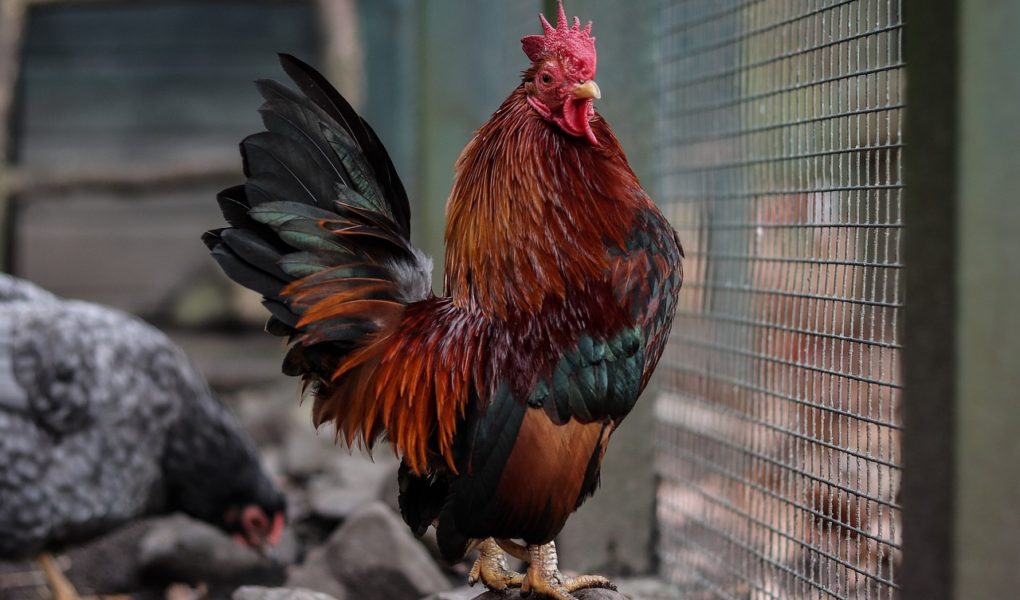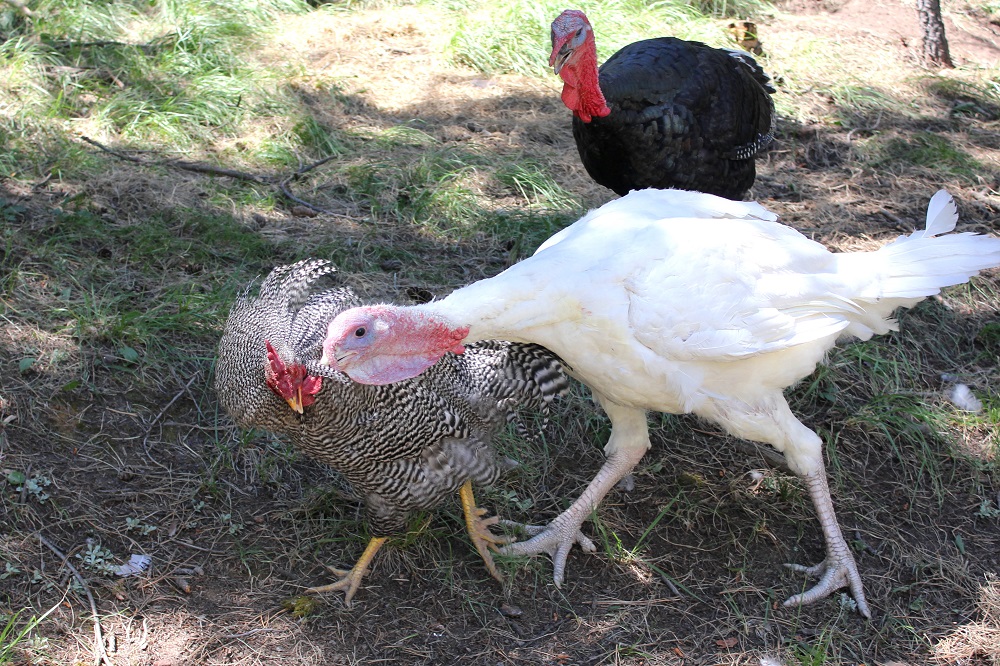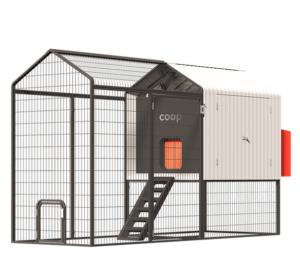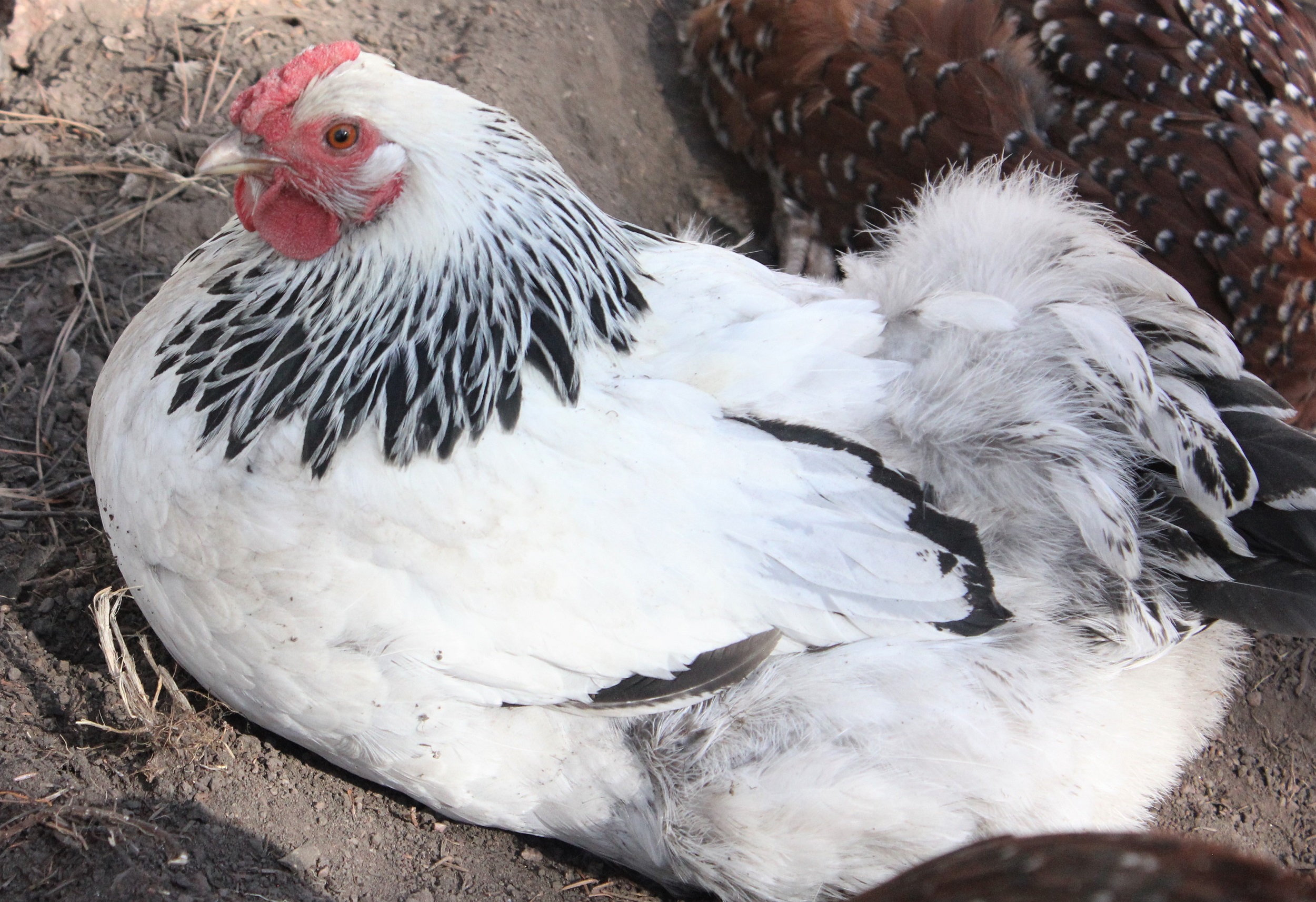Hi, if you are reading this post, you likely have a naughty bird that’s gotten aggressive. Or you have concerns with getting a rooster and it becoming aggressive. Ending up with a bird that wants to kick you is a tough one to avoid. It’s in their nature. Instinct takes over when it comes to protecting their ladies. No, not all roosters kick. But in my experience, most of them do.
This Post At A Glance:
Why Roosters Attack?
Is Cutting Spurs Abusive?
How To Deal With An Aggressive Rooster
- Stand Your Ground
- Space For All – Free Range
- Get Another Rooster
- Bond/Handle Your Rooster More
- Don’t Spook The Flock
- Protect Your Hens – Rooster Jail
- POPULAR – Pin The Bird
- Bunt The Bird – Be The Bigger Stronger Bird
- If All Else Fails
Which Method Is Best?
Why Roosters Attack?
Roosters attack both to protect their flock and to show dominance against other roosters. Their hormones can kick in anywhere from 4-12 months old. It’s possible to ride this period out until the hormones settle if you keep up on training the bird. Otherwise, the habits can become ingrained. Some breeds are more friendly than others. But it also depends on the individual bird.
*Below are pictures of our rooster fighting with the young maturing turkeys we had at the time. This is a battle of dominance vs protecting hens. The turkeys were finally tired of being bossed around. The turkeys eventually overheated and gave up to the persistence of the rooster. Though the rooster won, he did take a beating with several bloody wounds on his face that needed to heal. Why didn’t I stop it? I did try. But they were determined to figure out the pecking order. So I let them. They figured it out. And then things went back to normal with the turkey’s treating the rooster with respect.
Is Cutting Spurs Abusive?
 What are spurs and why do people remove them? Spurs are those painful hard spears that grow out from the roosters’ leg that they use to stab you when they are on the attack. Many people remove them so that it doesn’t hurt as much when the try to kick. They also do less damage to their hens when they try to mount them.
What are spurs and why do people remove them? Spurs are those painful hard spears that grow out from the roosters’ leg that they use to stab you when they are on the attack. Many people remove them so that it doesn’t hurt as much when the try to kick. They also do less damage to their hens when they try to mount them.
I’ve never personally removed my roosters’ spurs. Many say it doesn’t hurt to do so and that there is very little blood. Though I’ve also seen testimonies of people saying that their bird did bleed more and expressed obvious signs of being in pain for several days afterwards. So, it would appear it varies from bird to bird. For the most part there is minimal discomfort . . . but not always. Logically I’d say if there is blood, there are nerves and the ability to feel pain. Ultimately, removing spurs does not solve the aggression problem. But if spurs grow too long, it could be beneficial to trim, NOT remove, their spurs so they can walk normally.
Check Out The “TOP 80 FARMING BLOGS” by FeedSpot (CLICK HERE)
How To Deal With An Aggressive Rooster?
1. Stand Your Ground
A sure-fire way to get kicked or chased is to run. If you’ve ever watched videos of roosters chasing people/kids, the bird is almost always triggered by trying to mess with the bird or turning your back on the bird to walk or tun away. Walking away is weakness and encourages the bird to chase. Some say to wave your arms around and look big. Depending on your bird this can work, or it could also trigger an attack. Really, it’s just standing still while facing the bird and holding your ground until the bird leaves. Just don’t be the one to leave too soon or he’ll take the opportunity to come for you.
2. Space For All – Free Range
Okay so this doesn’t cure the problem, BUT, it’s a way to avoid conflict with your rooster. It’s also mentally stimulating for all of your chickens to be able to go out and free range. This provides the opportunity to be able to access the coop to clean and refill feeders/waterers while the whole flock is out looking for bugs.

3. Get Another Rooster
Just like most dogs can’t help but bark. Most roosters just can’t help but kick to get that instinct out that they are protecting their flock and doing their job. I remember the least amount of aggression I’ve had with roosters is when we had a trio of them. Maybe we just got lucky with nicer roosters. But I suspect that having several of them allowed the opportunity to take out that protection instinct on another bird and not on us. The head rooster tried a couple of times. But we didn’t put up with it, so it was a rare occurrence.
However, if you plan on having multiple roosters. You’ll want to make sure whichever rooster ends up at the bottom of the pecking order is not miserable. One of our roosters was a bantam and got picked on by everybody. Even the hens. So we eventually had to rehome him. Most time, as long as everybody has enough space to stay out of each other’s way, other roosters can hold their own and exists peacefully. Maybe occasionally trying to rise up in the ranks.
4. Bond/Handle The Rooster More
Yes, it is possible to bond with your rooster. Or at the very least be deemed as not a threat. The only problem is that it takes time and commitment. Something most homesteaders don’t have the time for. But if you have the time you can start giving your rooster treats, gently holding and handling them to show you mean no harm. Don’t restrain them necessarily. Pick them up, have them settle on your lap for a moment, and then give them the option to leave.
5. Don’t Spook The Flock
This is another way to avoid conflict in which you simply try not to do anything that upsets the hens because this will, in turn, upset your rooster and have him on your heels in an instant. Even roosters I’ve never had a problem with before, will come at me if I upset one of his girls. If you have to do any sort of maintenance with your hens, you may want to separate the rooster so he can’t come after you.

6. Protect Your Hens – Rooster Jail
The main problem between roosters and hens is if there are not enough hens for your rooster then they can get overbred, and their feathers will get rubbed off of their backs. You need about 8+ hens for your roo. And even then, often times the rooster picks 1-2 favorites that they “go overboard” with and cause feather loss on their backs. There are a few options in this case from isolating the damaged birds to heal, isolating the rooster for a while, or you can find protective saddles for your hens to allow their feathers to grow back.
Isolating your rooster will change his demeanor towards you to non-aggressive. Not always I’m sure, but this has been what I have found with our birds. With no hens to protect, there is no need for the aggression. On the downside it will make your bird more anxious. They will pace back and forth trying to get back to their girls.
7. POPULAR! Pin The Bird
A popular method shared on the internet is to catch the rooster and gently but firmly hold his body and head down to the ground. This is meant to imitate another rooster pinning him down to show dominance. Hold the bird down for roughly 30-60 seconds and then release him. He will likely go on this merry way back to the girls. His pride might get hurt, but he’ll be fine. It’ll help lessen the attacks. But don’t be surprised when they test you out again to see if they can win the next time.
 8. Bunt The Bird – Be The Bigger Stronger Bird
8. Bunt The Bird – Be The Bigger Stronger Bird
Is pinning the bird not working? You might need to up the ante.
So here is where we get controversial. Not everybody has chickens as pets and is willing to work on and cultivate a meaningful relationship with their rooster(s). We live in a day in age where you’re not supposed to lay a finger on any living thing because it could harm their mental wellbeing. There is very black and white thinking these days where if you’re not 100% nice to an animal, then anything else is abusive. I’m here to tell you, self-defense is NOT abuse.
There is the argument that roosters are not being aggressive when they attack, they are doing what is ingrained in them which is to protect their flock. Okay . . . well . . . when a rooster attacks a human child, giving that bird a good kick back is defending our own kin. It’s not to be mean, aggressive, or abusive. It’s self-defense and showing that bird you won’t put up with that. These birds can take a kids eye out and do damage (with no regrets). A swift kick in self-defense is firm but fair.
Abuse would be grabbing that bird for no reason and using far harsher physical punishment then is necessary and traumatizing the bird. Abuse would be lashing out at the bird for no reason. This bird is lashing out at you first. He’s trying to damage you. Remember the turkey fight up top? That was a good 10-15 minute bloody and intense battle. All birds went back to normal afterwards. The rooster was just happy to be with his flock afterwards.
I have seen this method work well though the bird will test you again at some point to see if he can beat you the next time. You only strike when the bird strikes. It may take 2-3 punts for a stubborn bird. And you may need to get firmer with each kick to get the point across. But this does work, and the bird will avoid getting in your way for a while. He won’t be traumatized. He’ll just stay out of your way and maybe have a blow to their pride. And just like roosters will run after you, it helps to do the same and chase the bird off in victory.
If you have the time to take the nicer approach with your rooster. Then I highly recommend it. It’s a great feeling for a rooster to be happy to see you. But it’s not the only way if you don’t have the time or willingness to have that kind of relationship with your bird.
I’ve seen someone say squirting water at a rooster who’s in mid-attack can work. But to be honest, who’s making sure they have water on hand when they are working around the yard . . . not me. If it works in your situation, you can give it a try. You could argue that it’s used initially for training the bird. But in my experience birds will test you every now and then. So, it’s nice to have more . . . “spur” of the moment methods.
9. If All Else Fails
If nothing is working and you’ve had about enough of your bird brain. You’ve got two options. Finding a new home for them, or dinner. Yes, you can eat a rooster. Chicken is chicken but an older rooster may be a bit tougher meat. If that’s not your thing. There are plenty of people who love to rescue unwanted animals. It’s tough to re-home a rooster for obvious reasons like the crowing and an excess in availability. But you can also seek out barnyard animal rescues to see if they have space available.
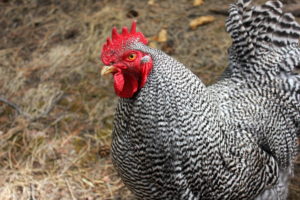
Which Method Is Best?
No size fits all. Every bird (and owner) is different and will have different needs. It’ll depend on if your bird is just a farm bird that needs to respect the family. Or a pet that gets a little more of your time and effort to work towards a symbolic relationship. Cock-A-Doodle-Doo!
Before You Go Don’t Forget To
Check Out The “TOP 80 FARMING BLOGS” by FeedSpot (CLICK HERE)
Recommended Products (clickable)
Photo Credits:
Rooster Spurs from shakeelbaloch – stock.adobe.com
Black/Brown Rooster, Rooster With Hens, Jungle Chickens, & Caged Bantam Rooster From Pixabay

